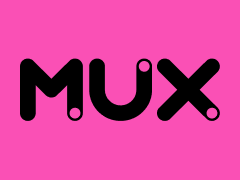By John Gruber

Mux — Video API for developers. Build in one sprint or less.
- Charlie Stross on Apple’s Long-Term Strategy
-
I don’t agree with all of it, but Charlie Stross’s analysis of Apple’s long-term strategy is just great overall. This is spot-on:
I’ve got a theory, and it’s this: Steve Jobs believes he’s gambling Apple’s future — the future of a corporation with a market cap well over US $200Bn — on an all-or-nothing push into a new market. HP have woken up and smelled the forest fire, two or three years late; Microsoft are mired in a tar pit, unable to grasp that the inferno heading towards them is going to burn down the entire ecosystem in which they exist.
Apple’s decision to ban apps made using Adobe’s Flash cross-compiler isn’t about the present. It’s about making decisions now — exerting control while they have it — to shape the landscape of the entire industry a decade from now. And count me in with Stross — HP’s decision to buy Palm is a sign that HP understands Apple’s strategy and they want in.
Here’s where I disagree with Stross:
And [Steve Jobs] really does not want cross-platform apps that might divert attention and energy away from his application ecosystem. The long term goal is to support the long-term migration of Apple from being a hardware company with a software arm into being a cloud computing company with a hardware subsidiary — almost like Google, if you squint at the Google Nexus One in the right light. The alternative is to join the PC industry in a long death spiral into irrelevance.
Apple needs to add a strong cloud computing infrastructure to its core competencies, yes. But hardware is more important to Apple’s business now than ever. I think it’s Apple’s goal to produce both software and hardware that its competitors cannot compete with. From a design perspective, Apple creates an experience. From a financial perspective, though, Apple sells hardware.
★ Friday, 30 April 2010
